
KENNEDY SPACE CENTER, FL – Nearing the final days of his history making one-year-long sojourn in orbit, space farming NASA astronaut Scott Kelly harvested the first ever crop of ‘Space Zinnias’ grown aboard the International Space Station (ISS) on a most appropriate day – Valentine’s Day, Sunday, Feb. 14, 2016.
After enduring an unexpected series of trial and tribulations – including a fearsome attack of ‘space mold’ – Kelly summoned his inner ‘Mark Watney’ and brought the Zinnia’s to life, blossoming in full color and drenched in natural sunlight. See photo above.
He spent weeks lovingly nursing the near dead plants back to health and proudly displayed the fruits of his blooming labor through the windows of the domed Cupola, jutting out from the orbiting outpost and dramatically back dropped by the blue waters of Earth and the blackness of space.
“Nursed the #SpaceFlowers all the way to today and now all that remains are memories,” tweeted NASA astronaut and Expedition 46 Commander Scott Kelly on Feb 14, 2016.
“Happy #Valentines Day!”
The zinnias are thus contributing invaluable experience to scientists and astronauts learning how to grow plants and food in microgravity during future deep space human expeditions planned for NASA’s “Journey to Mars” initiative.
The experimental Space Zinnias are truly an important part of NASA’s ongoing crop research activities and are being grown in the stations Veggie plant growth facility.
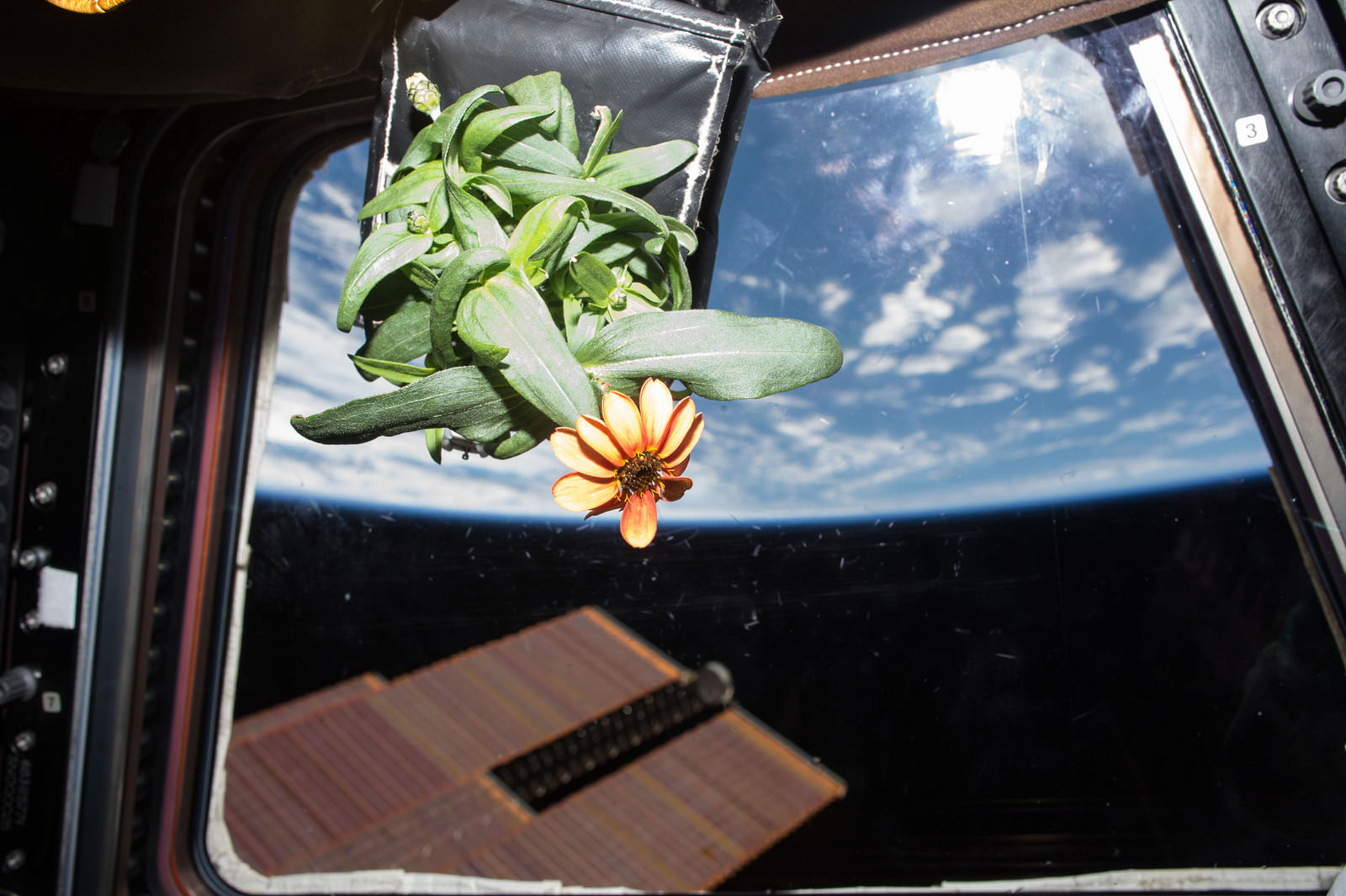
But it wasn’t always looking so rosy for the zinnias. Just before Christmas, Kelly found that these same Zinnias were suffering from a serious case of space blight when he discovered traces of mold on the flowers growing inside Veggie – as reported here.
Kelly asked to be given decision making power and was assigned as an “autonomous gardener,” Gioia Massa, NASA Kennedy payload scientist for Veggie, explained to Universe Today during a visit to the Veggie ground control experiment facility at NASA’s Kennedy Space Center (KSC) in Florida.
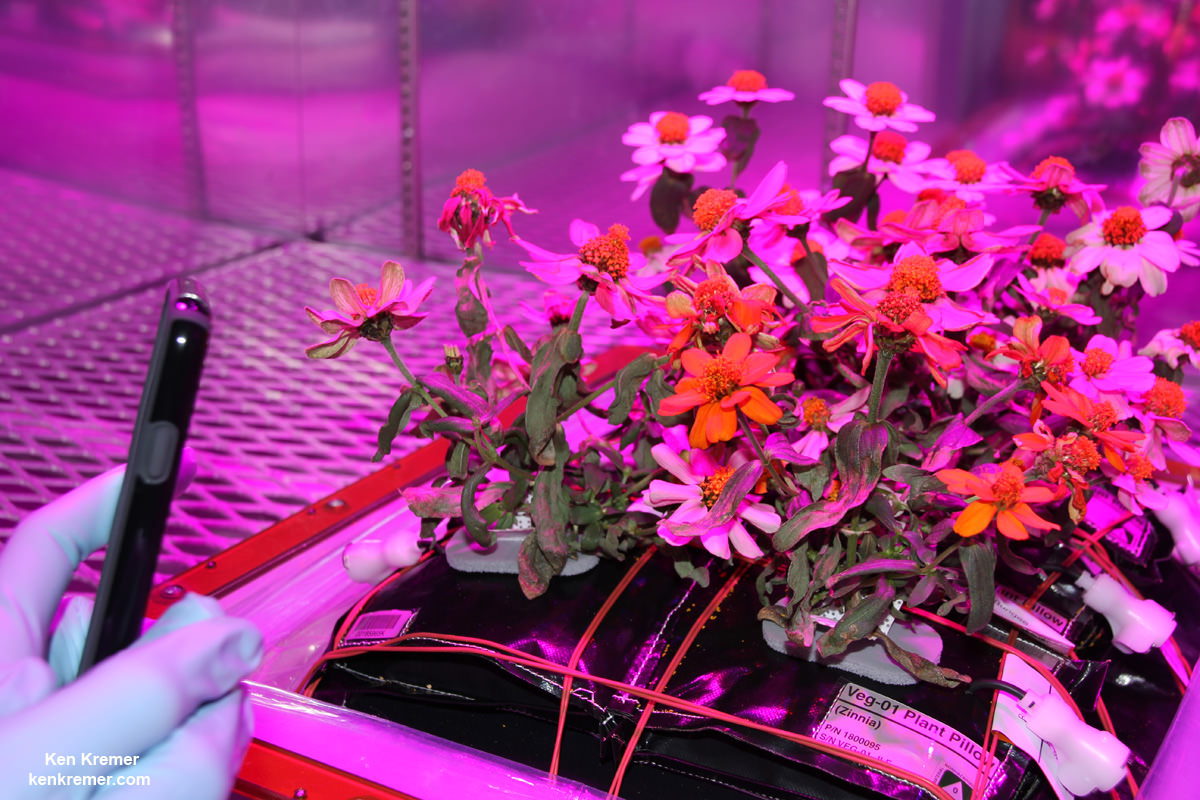
Ever since then, the space stations zinnias have been on the rebound.
“I think we’ve learned a lot about doing this kind of experiment. We’re being farmers in space,” Kelly explained before the harvest.
“I was extra motivated to bring the plants back to life. I’m going to harvest them on Valentine’s Day.”
Meanwhile back on Earth, scientists harvested the counterpart ‘ground truth’ Zinnia’s being grown at Veggie ground control in the Space Station Processing Facility at KSC on Feb. 11, the same way they are being grown and harvested on the ISS.
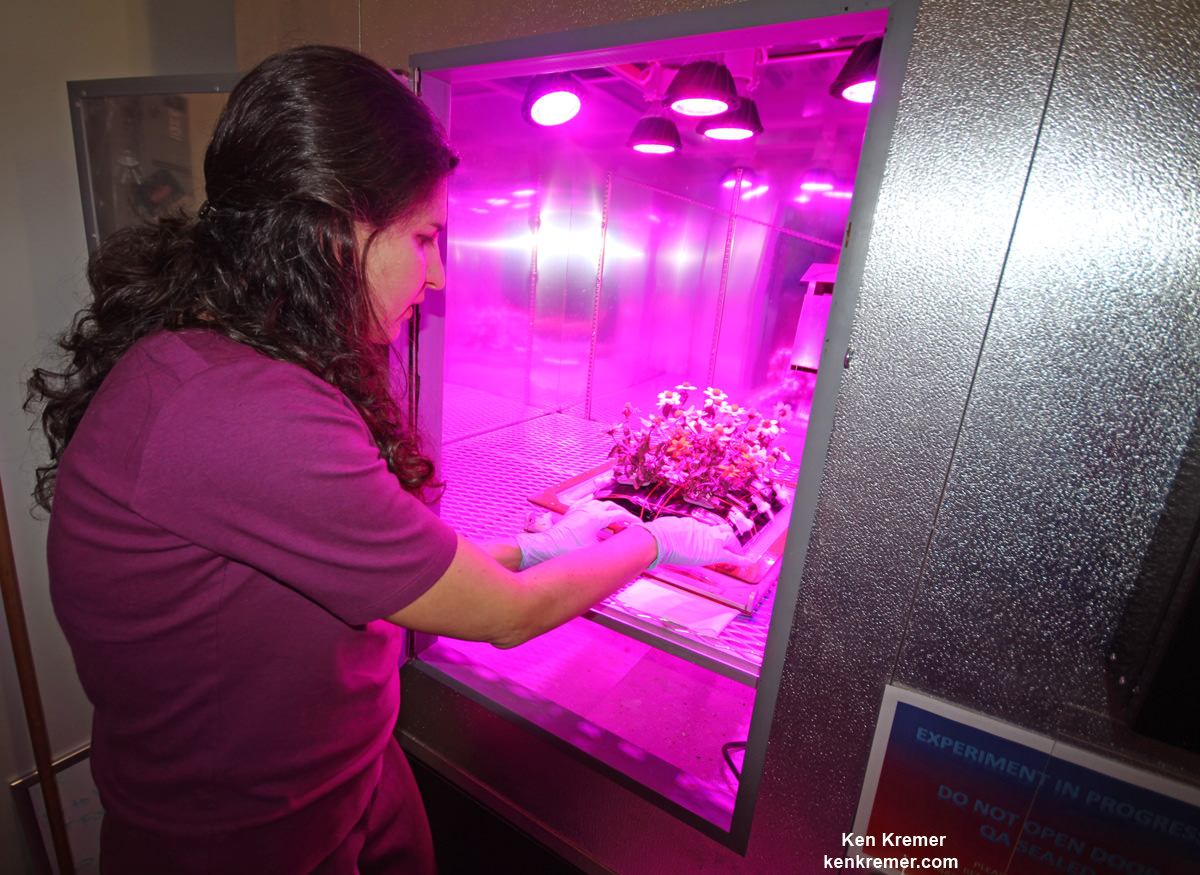
The team will compare and contrast the results of the ground and space grown zinnias in designing future space farming experiments.
Kelly’s space farming success comes just in the nick of time, as he is now less than two weeks away from the culmination of his ‘1 Year in Space’ mission aboard the ISS.
Kelly is the first American to spend a year in space.
And he comprises one half of the first ever ‘1 Year ISS crew’ – along with Russian cosmonaut Mikhail Kornienko.
Kelly and Kornienko serve as human guinea pigs for studying the effects of long term spaceflight in zero gravity on the human body that will aid planning for sending people on years long expeditions to Mars.
The dynamic duo and their four co-orbiting international crewmates are conducting hundreds of experiments aimed at paving the path for the eventual multi-year expeditions to the Red Planet.
NASA’s agency wide goal is to send humans on a ‘Journey to Mars’ during the 2030s.
The experimental space zinnias are normally bathed with red, green and blue LED lighting in the Veggie growth chamber. Kelly decided to occasionally nurture the plants further with some all natural sunlight from our life giving sun.
The Veggie experiment is comprised of “pillows” holding the Zinnia flower seedlings that provide nutrients to the plants root system inside the experimental and low-cost illuminated growth chamber.
The “Veggie” plant growth system is housed inside the European Space Agency’s Columbus laboratory located at the end of the US section of the ISS.
Veggie-01 was delivered to the ISS by the SpaceX-3 Dragon cargo resupply mission launched in April 2014, Massa told me.
The Veggie pillow sets contained the zinnia seeds and as well as romaine lettuce that was successfully grown in Veggie earlier in 2015, by Kelly and his crewmates.
Tomatoes will be the next crop grown inside Veggie, according to Massa.
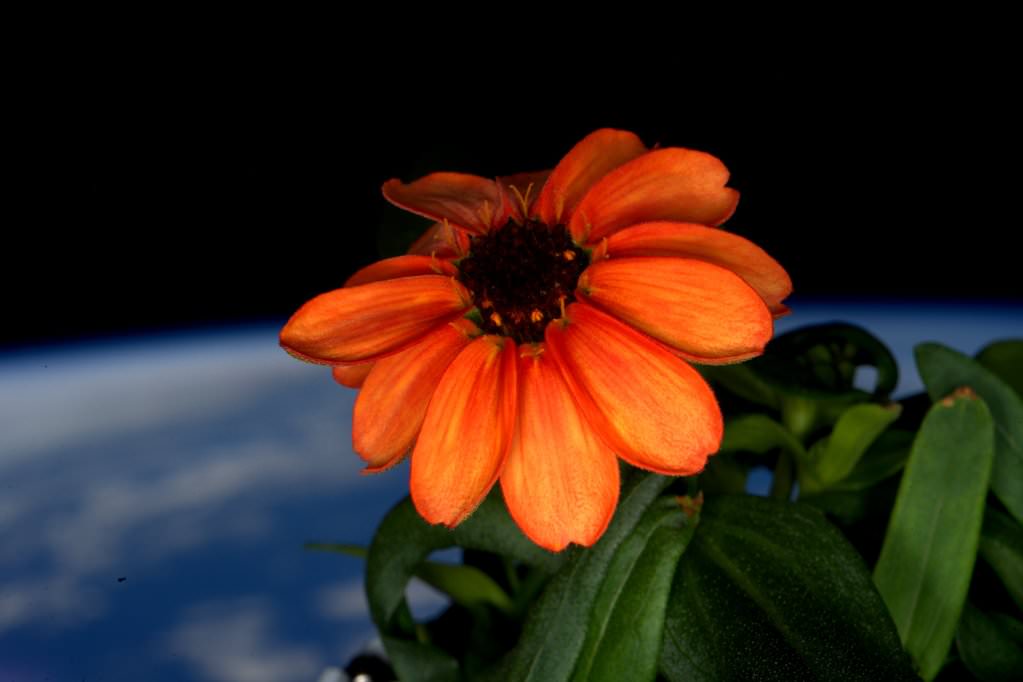
Stay tuned here for Ken’s continuing Earth and planetary science and human spaceflight news.
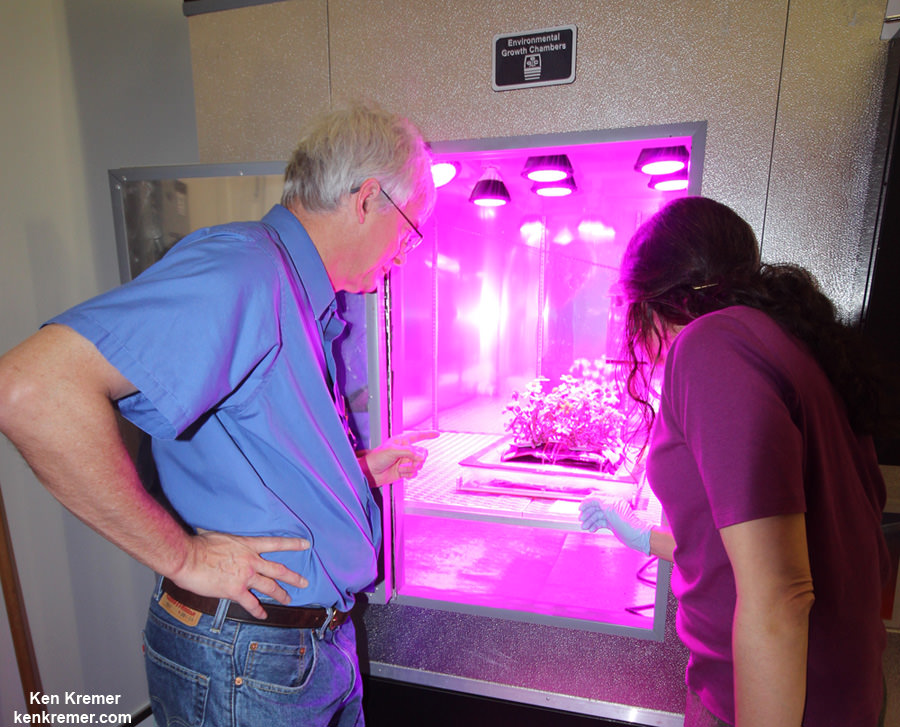

Mold will be our biggest enemy in space exploration, it is so resilient and so good at proliferating.
it might be a reasonable food source too.
It’s cool and all but petunias would have been really awesome. 🙂
PRETTY cool…